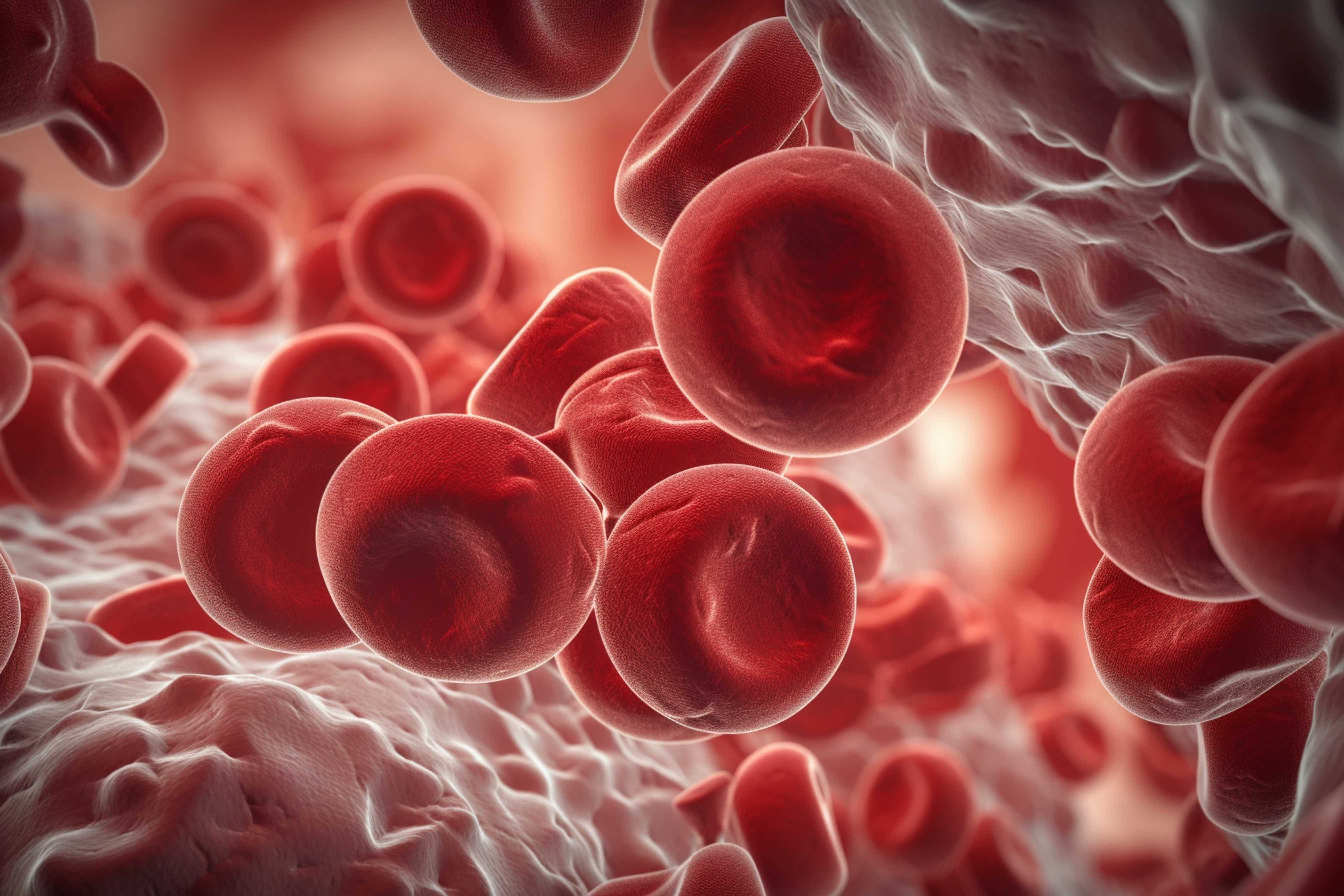- Center on Health Equity & Access
- Clinical
- Health Care Cost
- Health Care Delivery
- Insurance
- Policy
- Technology
- Value-Based Care
alloHSCT Yields Benefits in R/R AML Regardless of Leukemia Burden
Those with chronic graft-versus-host-disease who have received allogeneic hematopoietic stem cell transplant (alloHSCT) may experience enhanced graft-versus-leukemia effects, thus producing a lower relapse rate in acute myeloid leukemia.
This article was originally published by CancerNetwork®.
Patients with relapsed/refractory acute myeloid leukemia (AML) who are in non-remission may derive benefit from allogeneic hematopoietic stem cell transplant (alloHSCT) regardless of their leukemia burden during the procedure, according to findings from a retrospective study published in Annals of Hematology.
Investigators reported that 38.6% (95% CI, 37.5%-39.7%) of patients had grade 1 to 4 acute graft-versus-host-disease (GVHD) within 100 days after undergoing alloHSCT. The cumulative rate of chronic GVHD at 2 years was 50.4% (95% CI, 47.6%-53.3%). Moreover, the rates of at least moderate and at least severe chronic GVHD in patients, respectively, were 45.6% (95% CI, 42.0%-49.2%) and 25.3% (95% CI, 19.6%-30.9%).
Blood Cells | Image credit: Катерина Євтехова - stock.adobe.com

Treatment-related mortality (TRM) occurred in 13.8% (95% CI, 13.3%-14.4%) of patients at 100 days, in 22.8% (95% CI, 21.9%-23.7%) at 1 year, and 26.7% at 2 years (95% CI, 25.5%-27.8%). Overall, 43.2% (n = 19/44) of those who underwent alloHSCT had a relapse; 63.2% (n = 12/19) of these patients relapsed within 6 months after transplantation, and 84.2% (n = 16/19) relapsed within a year. Investigators highlighted a cumulative incidence of relapse (CIR) of 39.4% (95% CI, 38.0%-40.7%) at 1 year and 53.0% (95% CI, 51.0%-55.1%) at 2 years.
The 1-year and 2-year leukemia-free survival (LFS) rates, respectively, were 37.8% (95% CI, 24.8%-57.7%) and 20.3% (95% CI, 9.1%-45.3%), with no patients having a relapse at 2 years following transplantation. The median overall survival (OS) was 13.1 months (95% CI, 5.8-45.5), and investigators reported 1-year and 2-year survival rates of 55.3% (95% CI, 41.1%-74.3%) and 44.4% (95% CI, 30.2%-65.4%), respectively.
The study divided 16 patients each into 2 subgroups based on bone marrow involvement at the time of alloHSCT, with group A including those with a bone marrow blast count of less than 20% and group B including patients with a bone marrow blast count of 20% or higher. According to the investigators, there were no significant differences in outcomes including OS, LFS, CIR, and TRM between these groups.
“Our study indicates that alloHSCT is beneficial for [patients with relapsed/refractory] AML in [non-remission] status regardless of leukemia burden, and the presence of extramedullary leukemia does not adversely affect the clinical outcomes post-transplantation. This may also be related to the relatively younger age of the patients included in our study,” the study authors wrote. “Patients with [chronic] GVHD after alloHSCT can benefit from enhanced graft-versus-leukemia effect, leading to lower relapse rate. However, it is recommended to control [chronic] GVHD to mild to moderate levels to avoid the risk of life-threatening severe [chronic] GVHD.”
Investigators of this retrospective study assessed outcomes in 44 adult patients with relapsed/refractory AML who received salvage alloHSCT or had concomitant extramedullary leukemia between 2013 and 2022. With respect to conditioning regimens, 38 patients received myeloablative conditioning including busulfan, and 6 underwent myeloablative conditioning that was dependent on total body irradiation or total bone marrow irradiation. Patients with a diagnosis of AML based on 2008 World Health Organization criteria who were older than 16 at the time of transplant were included in the study.
The median patient age was 34.5 years (range, 16.0-54.0), and a majority of the population was male (63.6%). Additionally, most patients had primary AML (81.8%), intermediate-risk cytogenetics (40.9%), no FLT3 mutations (81.8%), and bone marrow blasts higher than 5% (72.7%).
Findings from univariate and multivariate regression analyses indicated that chronic GVHD after alloHSCT conferred protection against recurrence (HR, 0.14; 95% CI, 0.03-0.62; P = .010). Investigators also highlighted that developing acute GVHD following transplant correlated with a higher risk of recurrence (HR, 4.44; 95% CI, 1.38-14.27; P = .012).
Reference
Jiang S, Lu X, Wei R, et al. Salvage hematopoietic stem cell transplantation for patients with higher leukemia burden in relapsed or refractory acute myeloid leukemia: a ten‐year study. Ann Hematol. 2023;102:3205-3216. doi:10.1007/s00277-023-05406-z
HEDIS Glycemic Goal Achieved Using Control-IQ Technology
December 22nd 2025A greater proportion of patients with type 1 diabetes who used automated insulin delivery systems vs multiple daily injections achieved the Healthcare Effectiveness Data and Information Set (HEDIS) glycemic measure.
Read More
